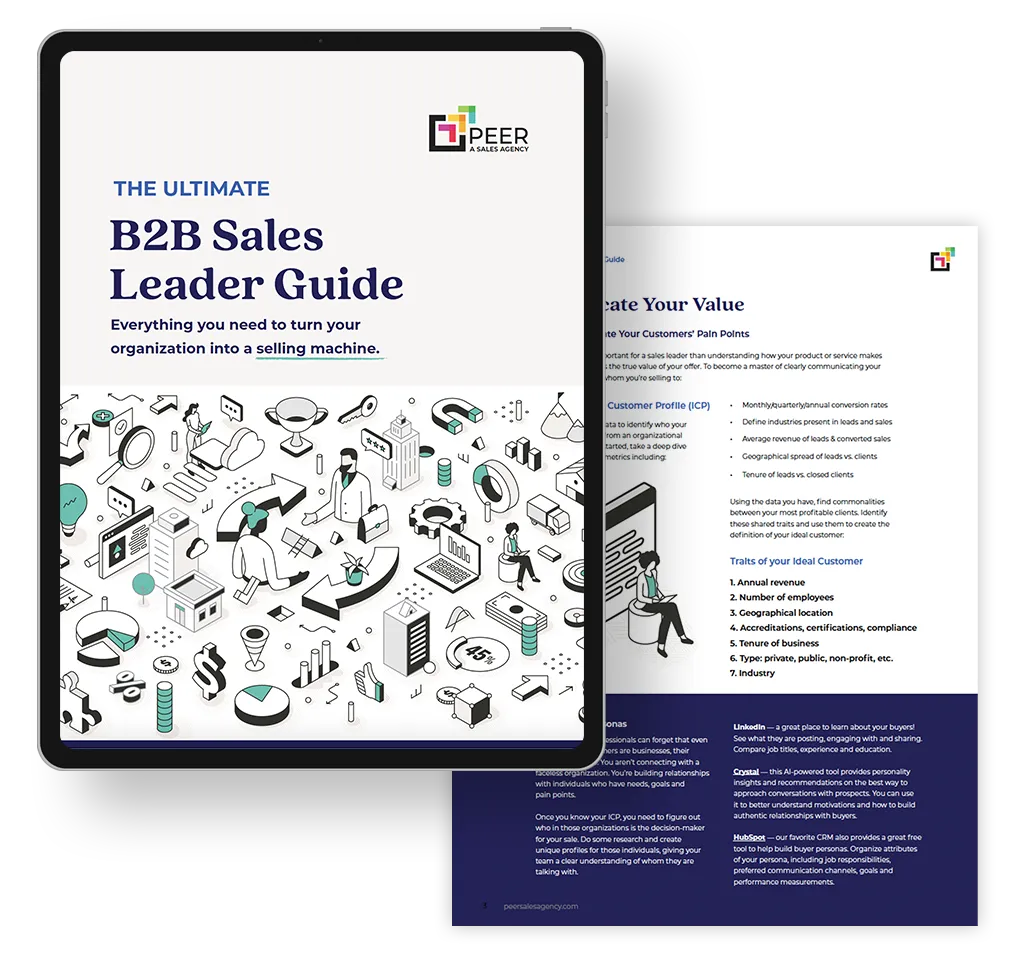You’ve invested valuable resources into generating those coveted leads. Excitement fills the air as you hit the send button on that first outreach email, eagerly anticipating a flood of responses. But alas, all you get is … crickets. Sound familiar? We feel your pain.
There’s nothing more frustrating than pouring your hard-earned dollars into lead generation, only to have those leads disappear into the abyss of silence.
Let’s tackle the challenge of resurrecting your elusive leads and warming prospects to the point that they are ready to engage with you.
Why Lead Nurturing Is Important
Lead nurturing plays a vital role in the sales and marketing process by building trust, establishing relationships and guiding prospects through the buyer’s journey. Lead nurturing helps build credibility with prospects, increasing the likelihood of conversion. By staying top-of-mind and engaging prospects with the right information and resources, businesses can guide prospects toward an informed buying decision. Need some data to convince you?
- Due to a lack of lead nurturing, nearly 80% of marketing leads don’t convert into sales (Source: Marketing Sherpa).
- On average, it requires 10 marketing-driven touches to transform a lead into a sales-ready opportunity (Source: Aberdeen Group).
- About 60% of prospects say no at least four times before saying yes (Source: salesmate.io).
- Businesses that nurture their leads see a 45% increase in lead generation ROI compared to those that do not (Source: MarketingSherpa).
- Companies that excel at lead nurturing generate 50% more sales-ready leads at a 33% lower cost per lead (Source: Forrester Research).
- Nurtured leads have a 23% shorter sales cycle (Source: Marketo).
How Does Lead Nurturing Work?
Lead nurturing involves building relationships with potential customers at each stage of the buyer’s journey: Awareness, Consideration and Decision. Lead nurturing campaigns focus on providing content that helps clients find a solution to their problem. They showcase your brand’s expertise and highlight the benefits of your product or service.
Awareness Stage
At this point, leads are just becoming familiar with your brand. They likely have a problem they are looking to solve and are researching solutions. It’s important to establish yourself as a trusted authority in your industry without heavily pushing a sale. This can be achieved through informative blog posts, white papers and social media posts that provide valuable information and address their pain points.
Consideration Stage
Here, leads are actively researching and comparing different solutions or vendors. It’s essential to continue nurturing them by providing relevant and helpful content that highlights how your products and services can solve their specific problems. This could include case studies, customer testimonials and product feature comparisons.
Decision Stage
At the decision state, leads are ready to make a purchase decision. It’s crucial to provide them with information that reassures them of their choice, such as success stories and personalized demos.
Saving Time With Lead Nurture Email Sequences
Lead nurturing is typically done through sending a series of emails to deliver relevant content and move the lead along the buyer’s journey. This can be a time-consuming process. In the B2B world, we see sales cycles in the three- to nine-month range, so your nurture campaigns may need to extend over longer periods of time.
Lead nurturing email sequences can be a game-changer for sales teams looking to save time and improve their outreach. These automated sequences are triggered by specific actions taken by leads, such as downloading a lead magnet or visiting a certain page on your website. Then, the series of emails are automatically deployed on a set timer. By setting up these sequences in a CRM like Hubspot, you can engage with prospective customers in a targeted and timely manner, without having to manually send individual emails.
The beauty of lead nurturing email sequences is that they can be personalized and tailored to the needs and interests of each lead. You can create a series of automated emails that provide valuable content, showcase your product features or share customer testimonials. By leveraging the power of automated email sequences, your sales team can focus their time and energy on building relationships and closing deals, rather than manually sending out emails.
9 Lead Nurture Email Best Practices
So, how can you ensure that your lead nurture emails are effective? We’ve pulled together our top tips to ensure our lead nurture campaigns are working hard to maximize conversion rates and drive more sales.
1. Make contact fast
When it comes to potential leads, time is of the essence. Making contact fast is crucial in nurturing those leads and turning them into loyal customers. One effective way to make that initial contact is by sending a welcome email as soon as they sign up for your email list.
A welcome email is the perfect opportunity to introduce yourself, set expectations and build trust with your potential leads. If they’ve downloaded a lead magnet, redelivering the asset in the email is also a nice gesture and an excuse for that first introduction. By automating this process, you ensure that every new sign-up receives a timely and personalized welcome email without any manual effort.
2. Understand where they are in the sales funnel
To effectively nurture leads and convert them into customers, it’s important to meet your buyers where they are in their journey. This means understanding their position in the sales funnel and creating targeted messaging based on their needs.
- Get familiar with the sales funnel: Familiarize yourself with the different stages of the sales funnel (awareness, consideration, decision) to identify where your potential customers are in their buying journey.
- Know your customer: Develop buyer personas to gain insights into your target audience’s demographics, pain points, motivations and buying behaviors. This will enable you to create more personalized content and messaging.
Read: How to use content to influence B2B buyers at every stage of the buyer’s journey - Craft targeted messaging: Tailor your emails to address the specific needs and interests of each buyer persona at different stages of the sales funnel. Use language and tone that resonate with your audience and highlight the value your product or service offers.
- Provide relevant content: By delivering content that’s aligned to the stage your buyer is in, you help educate them and move them along their jour=[ney. This ensures that your leads stay engaged and increases the likelihood of conversion.
3. Keep it short
In today’s fast-paced digital world, people are constantly bombarded with information overload. It’s easy for your leads to get overwhelmed and confused, especially when it comes to your lead nurturing emails. That’s why it’s crucial to keep your emails concise and to the point.
The recommended length for lead nurturing emails is between 50 and 125 words. Yes, you read that right. Short and sweet is the way to go.
Lengthy emails tend to lead to confusion. Your leads might skim through the content or miss important details. By keeping your emails short, you make it easier for your leads to understand and absorb the key points you’re trying to convey.
4. Make deposits
Making deposits in lead nurturing refers to the consistent delivery of valuable content, information or offers to your leads. It is essential for building trust and keeping subscribers engaged with your emails. By continuously providing something of worth, you show your subscribers that you are committed to helping them succeed.
You should make 7–10 deposits for every ask you make. So, before hitting them up for that meeting, make sure you’ve put in the work to give them the goods.
By offering valuable content, such as industry insights, tips or exclusive resources that help them solve their problems, you not only keep your subscribers engaged, but you also demonstrate your expertise and knowledge. This positions you as a thought-leader and increases the likelihood they will view you as a trusted advisor.
5. Address pain points
Understanding your audience’s pain points is crucial for addressing their needs and providing them with the solutions they’re looking for.
When you dial into their problems and pains, you show your customers that you understand their challenges and empathize with their frustrations. This builds trust and credibility, making them more likely to engage with you and take action.
It also sets you up to highlight the benefits your product or service can provide. You can show potential customers how you can make their lives easier, solve their problems and improve their overall experience.
Read: Struggling to communicate your value? You need a messaging matrix.
6. Provide social proof
By showcasing positive feedback from satisfied customers, you can establish your credibility and increase the confidence of your potential customers in your product or service. Here are some ways to incorporate social proof into your lead nurture campaigns:
- Feature customer testimonials: Include quotes or stories from previous customers who have benefited from your offerings. Highlight the specific results they achieved and how your product or service solved their problems.
- Share positive reviews: If you have received positive reviews on platforms like Google, Yelp or industry-specific review sites, include snippets in your emails. You can also provide links to full reviews so interested leads can read more.
- Highlight case studies: Showcase real-life examples of how your product or service has helped customers overcome challenges and achieve success. Include measurable results and demonstrate the value you can provide.
7. Only One CTA per email
When crafting lead nurture emails, it’s important to keep the focus on a single call-to-action (CTA). This helps avoid overwhelming your email recipients and increases the chances of conversion. By emphasizing a single CTA, you can ensure that your message is focused and persuasive.
8. Personalization is vital
Personalization is one of the top ways to get a response. The more you can personalize, the better. You want your email to sound as if you crafted it JUST for that one individual. That can be challenging when automating, but it’s possible with a bit of segmentation.
Email segmentation allows you to divide your email list into specific groups based on their interests, preferences or behaviors. This segmentation enables you to create personalized campaigns that resonate with each individual lead.
Personalization should go beyond just putting their name in the subject line. Leverage the data you have on each lead, such as company info, demographics, or browsing behavior. Then tailor your content and message to their specific needs and interests. This relevance increases the chances of engagement and conversion.
9. Test, test and test again
When it comes to lead nurture campaigns, it’s crucial to continually optimize your content and strategy to achieve the best results. A/B testing involves creating two versions of an email and sending them to different subsets of your email list to see which performs better.
By testing different elements like subject lines, content, calls-to-action or even send times, you can gather valuable insights into what resonates most with your audience. This allows you to refine and improve your email campaigns over time.
A/B testing is important because it helps you make data-driven decisions based on real customer responses. It ensures that you’re delivering the most effective content to your leads, improving engagement, conversion rates and overall ROI.
Additional Tips to Nurture Leads
Ok, maybe we have more than just nine tips. Here are a few bonus ideas to improve your nurture process.
Connect with leads on social
In addition to email, social media platforms like LinkedIn offer a great opportunity to add a personal element to the relationship with your leads. Connect with your leads on LinkedIn and engage with their content by liking, commenting and sharing. This shows that you are interested in their industry and updates, creating a stronger connection.
Set reminders to engage with your leads on social media. This could be as simple as liking their posts or wishing them a happy work anniversary. Celebrate their successes, congratulate them on milestones or share valuable industry insights. This helps build rapport and shows that you genuinely care about their success. Regular interaction keeps you on their radar and maintains the connection.
Use lead-scoring tactics
Lead scoring is a method of assigning points to the different actions and behaviors of leads to determine their readiness to move forward in the sales funnel. By implementing the following key elements into your lead-scoring strategy, you can effectively identify and prioritize the most qualified leads:
- Define scoring criteria: Establish clear criteria that align with your ideal customer profile and sales process. Consider factors such as job title, company size, engagement with your website or content, and specific actions taken such as downloading a whitepaper or requesting a demo.
Read: Step-by-Step Guide to Creating Your Ideal Customer Profile
- Assign point values: Assign different point values to each action or behavior based on its significance and impact on the buying process. For example, attending a webinar may be assigned more points than simply visiting your website.
- Set thresholds: Determine specific point thresholds that indicate a lead’s readiness to move to the next stage. A high score signifies a hot lead that should be prioritized for immediate follow-up, while a low score indicates a lead that may require further nurturing.
- Continuously refine and optimize: Regularly review and update your lead-scoring criteria based on data and feedback from your sales team. This ensures that your scoring system remains accurate and relevant.
Use a retargeting campaign
A retargeting campaign involves displaying targeted ads to your visitors as they browse other websites or social media platforms. The goal of a retargeting campaign is to increase brand awareness and encourage prospects to make a purchase or take a desired action. It’s a great way to keep your business top of mind as your prospects research online and consider other solutions.
Use newsletters for long-term nurturing
Newsletters are a valuable tool for long-term lead nurturing. Even after your subscribers have completed an automated nurture sequence, newsletters can help keep them engaged and interested in your brand. To effectively nurture leads through newsletters, it is important to include a mix of helpful content, updates about your brand and promotional offers. By providing valuable and relevant content, you can continue to build a stronger relationship with your leads over time.
It’s also a great way to segment prospects into another nurture stream based on actions you present to them in your newsletter.
Lead nurturing is complicated. Peer can help.
We get it. It’s time consuming and complicated to figure out the best lead nurture process for your company. And without one in place, you are likely wasting money on lead generation efforts due to leads falling through the cracks. If you need help getting your nurture process shored up, let our team of experts help.



